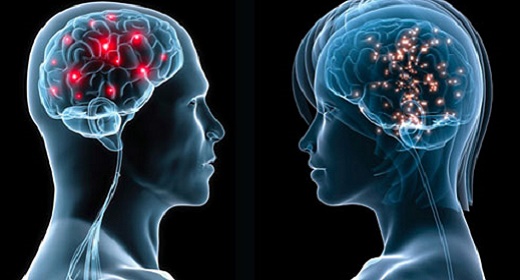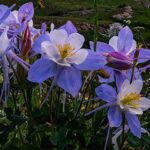by Eugene Taylor: Everything about psychedelics from usage to America’s liberal attitude towards drugs…
First they were in. Then they were out. Now they’re back. Only this time it’s different.
Peace Timothy Leary.
Three decades after the hippe psychologist advised a generation to turn on and tune in to LSD and other psychedelics, people are now doing it in droves. The difference is these days no one’s dropping out. They don’t have to. The world has turned. The goal of psychedelic use, psychospiritual awakening–looking inward, risking chaos, and straggling to overcome our lower nature in order to grasp at higher realities–has the firm endorsement of that bellwether of cultural institutions, the bestseller list.
Increasingly, expansion of awareness seems a necessary condition for everyday life, not a mode of disconnection. That’s why a significant number of Americans are now living with the alternative realities originally explored through psychedelic use. Environmental awareness has developed into a whole new movement called ecopsychology, defined as a spiritual-consciousness of the earth. A holistic approach to wellness has moved center stage, along with interest in healthy foods, and physical fitness. Meanwhile, hypnosis, meditation, yoga, and biofeedback–all ways to alter one’s consciousness–are now moving onto the national health care agenda as new forms of inexpensive, preventive self-administered medicine.
Psychospiritual awakening has become the watchword of a new psychology. None other than Aldous Huxley echoed such sentiments when, quoting the English poet William Blake, he said, “If the doors of perception were cleansed, everything would appear to man as it is, infinite.” That was in 1954, in The Doors of Perception, a work that provided the first hint of the psychedelic revolution yet to come.
Psychedelics–the word itself–was coined in 1956 by the British psychiatrist Humphrey Osmond and refers to the “mind-altering” properties of naturally occurring hallucinogenic plant substances such as marijuana (a common weed), psilocybin (a cow patty mushroom), peyote (a cactus flower), and LSD (a common bread mold). All can currently be found in parts of the U.S. with a little earnest looking in the wilderness.
Within a few years of Huxley’s book, millions of people began experimenting with these substances. Garage laboratories manufacturing LSD sprouted everywhere and people began growing marijuana in their backyards.
“Psychedelic” soon became synonymous with journeys into seemingly uncharted regions of inner experience, the expansion of consciousness, transcendence, and self-knowledge on a grand scale. It stood for altogether new forms of social experimentation in everything from dress and music to sex and civil rights.
Then, almost as suddenly as they had appeared, psychedelics disappeared. Legal measures drove them underground, where their use thrived. But the true products of the revolution, such as new definitions of the family, redefined gender rules, and the revived women’s movement, flourished.
Now, psychedelics are back again. But this time, there’s a difference:
o While government policies remain conservative, there’s a more liberal attitude about drugs among many people. Indeed, now there seems to be two radically different cultures: those who’ve tried drugs and those who haven’t. And the number of people experimenting with drugs continues to grow.
o Recreational use, especially among people under 30, is more cutting edge as new designer drugs synthesized in the laboratory have proliferated.
A recent Columbia University study showed that marijuana consumption has doubled among teenagers. Likewise, the University of Michigan, which has been tracking trends in drug usage, finds it has increased, particularly among high school and college kids.
Perhaps the most overt example of the psychedelic revival can be found at “raves.” High-tech, high-decibel, computer-generated music, psychedelic drugs, and marathon dancing swirl continuously for as much as three to four days. On a typical weekend in the San Francisco Bay area, there may be 20,000 to 30,000 teenagers dancing around theclock, 80 percent of them under the influence of drugs.
Another sign of the times is a surge in use of MDMA, a laboratory-synthesized variant of a hallucinogen that naturally occurs in the body. It’s the new drug of choice among those who formerly ingested LSD, and went on to pursue chemical-free spiritual awareness. Also known as Ecstasy, it’s a cross between a psychedelic and an amphetamine; in the majority of users it creates a sense of loving presence and an improved reorientation toward intimate relationships. And it deepens meditative calmness.
A 1987 survey of Stanford University students showed that 39 percent had taken MDMA at least once. By the end of the 1980s, an estimated 10,000 doses per month were in circulation in the U.S.; by 1993, six million doses a year were manufactured in home-based laboratories.
Even though the Drug Enforcement Agency classified MDMA as a substance with no medical use and high abuse potential in 1986, scientific research is still permitted by the government. But it’s been limited almost exclusively to animal studies, according to the California Society of Addiction Medicine.
Meanwhile, drug use has become so sophisticated that it has spawned one of the hot new topics on the Internet–ethnobotany, the study of sacred plants in non-technological cultures. As fast as experts identify psychedelic plant substances used in native religious ceremonies around the world, youthful entrepreneurs with Ph.D.’s in chemistry trade their formulas on the Internet. Cyberspace is abuzz with recipes for psychedelic chemicals so new they’re not yet even classed as illegal.
There can be no doubt, however, that in the history of psychedelic drug use, lives have been lost, and minds permanently altered. Sometimes people who smoke marijuana become disoriented and confused, rather than calm and enlightened. Intrepid mushroom gatherers have been known to ingest fungi that only looked similar to psilocybin–and died shortly thereafter. People have taken LSD and committed suicide.
In addition, animal studies show that neurological damage occurs when extremely large doses of psychedelics are ingested. Though comparable human damage has not been conclusively established, it’s now well known that attitude, environment, and drug purity often influence how they affect us. In general, psychedelics are a poor choice for people barely able to keep their daily lives together, or those who live marginally. Borderline psychotics, people with a predisposition to mental illness, those with severe compulsions, or those with a tendency to abuse other substances, like alcohol, often don’t do well when they ingest psychedelics purely for recreational purposes.
o At the same time recreational use is increasing, a host of psychiatric and medical benefits from physician-supervised use of psychedelic compounds is emerging.
LSD-assisted psychotherapy. Researchers are exploring the use of LSD to accelerate the process of psychotherapy in the treatment of persistent problems such as personality disorder, obsessive compulsive behavior, and depression. Some psychiatrists believe that under the properly guided influence of these drugs, personal identity can be more easily restructured, compulsions based on subconscious ideas more easily rooted out, and that depression is countered by elevated mood states that persist after the physiological effects have abated.
For example, in the early 1970s, the Maryland Psychiatric Research Clinic applied psychedelics to the treatment of chronic alcoholism. It achieved a reported recovery rate of 50 percent.
More recently, between 1988 and 1993, the Swiss government licensed a group of psychiatrists, all members of the Swiss Medical Society for Psycholytic Therapy (psycholytic refers to the administration of psychedelics in relatively low doses), to begin LSD-assisted psychotherapy with patients who hadn’t improved after standard psychiatric treatment. All of the patients had been diagnosed with conditions ranging from personality disorder to affective disorder and adjustment problems. By the end of treatment, 90 percent reported slight to good improvement. Nevertheless, due to mounting pressure from other governments, the Swiss ended the therapy.
Prospects for research into LSD therapy in the U.S. remain uncertain. So far, the Food and Drug Administration (FDA) has approved only one scientific study of LSD–but it has floundered for lack of adequate funding. No public organization will finance such research. Some private funding has been available, but the amounts are meager.
Ibogaine. This plant substance from West Africa, used in Gabon puberty rites, is being investigated for treatment of cocaine and heroin addiction. Tried on a group of heroin addicts in 1962, the drug was found to extinguish the craving associated with withdrawal. One of those successfully cured, Howard Lotsof, crusaded for its use and in the mid-80s convinced a Belgian company to manufacture it for distribution to addicts in the Netherlands, where drug policies are more lenient than the U.S. Although it proved moderately successful when tested on a group of 60 subjects, psychiatrist Herbert Kleber, M.D., director of the division of substance abuse at Columbia University College of Physicians and Surgeons in New York, remains cautious. “The evidence is anecdotal and not based on careful scientific studies,” he says.
Nevertheless, medical science is seeking a cure for heroin and cocaine addiction and ibogaine looks like a possibility. “Right now we have no other drug that looks as good,” confirms Curtis Wright, M.D., a medical officer of the FDA, which recently approved limited trials for ibogaine on cocaine addicts at the University of Miami.
MDMA. In 1994, the FDA also approved studies to establish MDMA’s safety. Psychiatrist Charles Grob, M.D., of UCLA, plans to test it in the relief of physical pain and psychological trauma in end-stage cancer patients, in treating post-traumatic stress disorder among veterans, and in the relief of chronic back and arthritis pain. Its effect on brain chemistry is also under study.
Psilocybin. Since 1990, the National Institute of Drug Abuse has funded Richard Strassman, M.D., associate professor of psychiatry at the University of New Mexico, to study the potential uses of psilocybin, the psychedelic derived from mushrooms. He’s investigating its use in the treatment of schizophrenia and as an adjunct to psychotherapy.
Marijuana. Its active ingredient, THC, or tetrahydracannabinol, helps relieve pain among cancer patients and eases nausea and gastrointestinal problems in HIV-positive and AIDS patients. Despite the fact that no one else can legally use it, in the 1970s the FDA initiated an extremely limited program to distribute marijuana to people with glaucoma, chronic pain, and spasticity. By 1989, the program also included some AIDS patients. In 1992, the program was cancelled by the Bush administration; they didn’t want to be seen as endorsing the drug.
As of 1996, eight of the original recipients continue to receive the drug, which the government grows at the University of Mississippi.
When media attention increased applications to the program, federal authorities instead began to advocate using THC in pill form. According to FDA spokesman William Grigg, thousands of patients who receive chemotherapy benefit from the pills. But critics contend that it’s easier to regulate the dosage when the drug is inhaled. In any case, according to a recent survey conducted by Harvard researchers, 44 percent of specialists said they told their patients to use marijuana to counter the nausea from chemotherapy, even though it’s illegal. Despite federal restrictions, a California state referendum on medical marijuana will be voted on this year.
Psychedelics and the Brain
Sparked partly by the recent discovery that the body makes its own opioids, an entirely new field of neurochemistry has sprung up that views the human body as a giant chemical factory.
For two thousand years science has focused its attention on the brain and the hard wiring of the nervous system as the seat of intelligence and consciousness. Now, however, brain cells have been found to secrete chemical messengers that allow the brain to communicate with individual cells floating through the body that are not in direct contact with any part of the central nervous system. Researchers at MIT dubbed this new information loop the “parasynaptic information network” and postulated that it may be the main avenue by which information is exchanged between the mind and body.
Georgetown professor Candice Pert, Ph.D., has taken this hypothesis one step further and proposed that the type of information exchange going on in this network is related to mood as well as autonomic functioning.
Consequently, the race is on to draw the precise chemical map of brain sites where different substances bind with target cells through complex lock-and-key mechanisms called receptors. One of the newest discoveries is that the body appears to produce not only its own opioid-like compounds, but its own psychedelic-like compounds as well.
Scarcely a week goes by that new substances are not being discovered and reported in neuroscience literature. One of the most recent findings is that marijuana, instead of interrupting brain processes the way other drugs do, stimulates in the brain specific receptors normally meant to receive the body’s own psychedelic compounds. Substances like marijuana have their effect on us because they accidentally fit these inborn receptors so well.
In 1988 researchers discovered the brain receptor that binds with the THC molecule. The conclusion was in-escapable–there must therefore be natural THC-like brain molecules that trigger this same receptor. In 1992, researchers at the Hebrew University in Jerusalem discovered it was arachadonic acid, a substance common to all cells. Because of the euphoric effects of THC they called it anandamide (ananda means bliss in Sanskrit). These investigators then went on to confirm anandamide’s cannabinoid properties. (When tested in mice, it created a spasm in the sex organs, as THC does.)
Exactly what do anandamide-making chemicals do in the nervous system? Researchers are now trolling for possibly overlooked cannabinoids in the brain–and searching for synthetic drugs that have the same effects as marijuana. The yield may be new medicines that act as painkillers and antihypertensives, as well as compounds that prevent nausea and lower eye pressure in glaucoma.
Looking at the big picture, there are two revolutions in process: one in the lab, designed to unlock the chemical complexities of consciousness, the other in popular culture, focused on the spiritual evolution of personality. Because psychedelics are playing a key role in each, these two cultural forces are destined to meet. What part psychedelics will play, however, is still uncertain. As Lester Grinspoon, M.D., the distinguished Harvard psychiatrist, has said, “Psychedelics are truly a double-edged sword. On the one hand, they have potential for harm, on the other, tremendous potential for good. How to minimize the harm so it is overshadowed by the good remains the central question to be answered.”










































